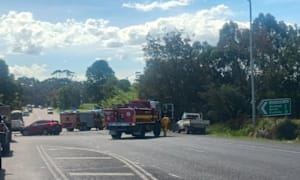MEMBERS of the Kilcunda Community Association would like to see more urgent action to protect the Bass Coast Rail Trail section near the Lionel Rose car park, where years of erosion have now carved away a sizable chunk of the dune holding the path in place.
The trail, loved by walkers and cyclists for its incredible coastal views, has been under attack for decades. But residents say the damage has accelerated in recent years, leaving the area unstable and unsafe.
General committee member Allan Richardson said the staircase leading from the car park to the beach was swept away in 2020, cutting off safe access for locals and visitors.
“I started lobbying the council to repair or replace it in 2021,” he said. “Since then, the ocean has continued to eat away at the dune, and now people are jumping down from the trail, which is only making things worse.”
President of the association, Marcel Van Den Bronk, said people taking shortcuts through the dunes have added to the problem.
“The main cause is the ocean and storm activity, but people cutting through the dune are destroying vegetation that helps protect it,” he said. “Education is important, but the bigger issue is that there just isn’t a safe way to get to the beach anymore.”
The situation has changed how the community uses the area. Families often stay away from this stretch of beach now due to the lack of access, Mr Richardson said, while younger visitors still try their luck.
“The car park fills up on any good day,” he said.
“People follow the boardwalk and then find there’s no access, so they just jump off the dune.”
The association first raised the issue with Bass Coast Shire Council in 2021, but management responsibilities have since become divided. In 2024, Parks Victoria took over the beachside of the trail, while the council retained control of the path itself, a split that has caused confusion about who should fix what.
“Both Parks Victoria and Council have tried to work through it, and that’s worth acknowledging,” Mr Van Den Bronk said.
“Unfortunately, it hasn’t been successful, and we’d like to see more.”
Mr Richardson said Parks Victoria installed a temporary staircase late last year, but winter weather has already torn it away.
“The key now is for Parks Victoria to determine where the future beach access will be,”
he said.
“Council had funding ready to go for an alignment path, but that work stopped once the temporary staircase failed.”
Committee member Marianne Van Den Bronk said losing this part of the rail trail would be devastating for locals, but tourism as well.
“This part of the rail trail is the nicest part,” she said.
“If we lose this part of the trail, that will affect tourism. It’s beautiful, and if we don’t look after the cliff face, it’ll go.”
The association wants erosion prevention works to be made a priority before the next storm season hits.
“I think we need to act early,” Mr Van Den Bronk said.
“We shouldn’t wait until it’s gone, and people ask why nothing was done. It’s too late then.”
Parks Victoria area chief ranger Gerard Delaney said erosion events along the Gippsland coastline are a natural occurrence, driven by a combination of strong winds, high tides and large swells.
“The power of the event destroyed the recently upgraded stairs and landing area and carried the debris 80 kilometres to Wilsons Promontory,” Mr Delaney said.
He said Parks Victoria is working with Bass Coast Shire Council to manage the ongoing impacts of erosion and to identify safer access points for visitors.
However, Parks Victoria also noted that due to the steepness of the dunes at Kilcunda, no feasible alternative access point has yet been identified.


















